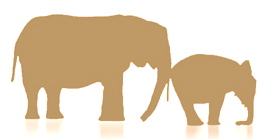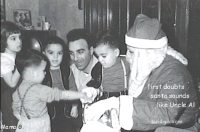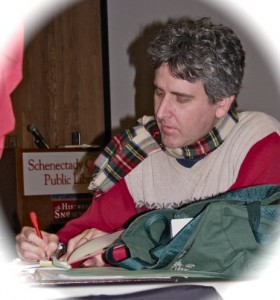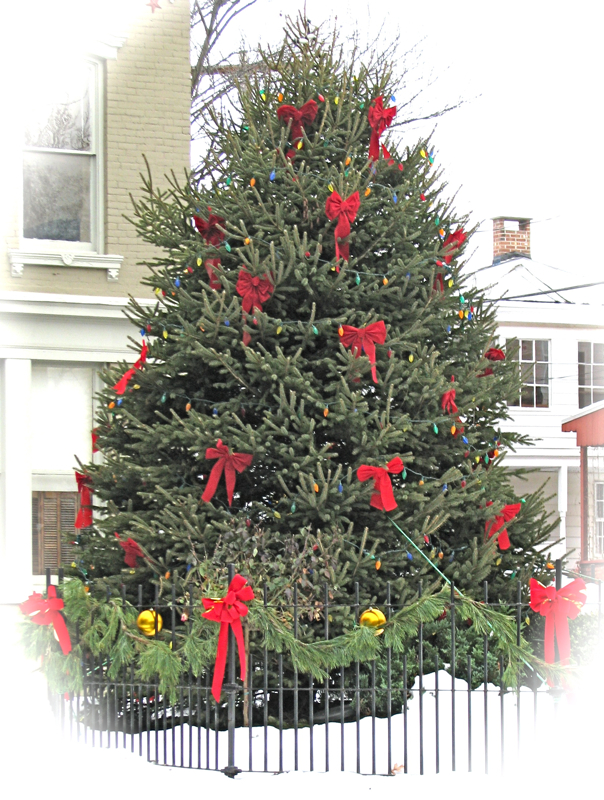holidays over –
the dog puts a halo
on my snow angel
… by dagosan
.. f/k/a is going to the dogs today, inspired by a few stories in the news (about Colombian coffee, assistance creatures and Pavlovian partisan politics, which are discussed below), plus a haiku or two.
distant thunder
the neighbor’s dog
scratches the door
in the park
my dog fetches
a better stick
… by w.f. owen — from haiku notebook
tripping over the dog
again…
night of winter rain
… by Kobayashi Issa, translated by David G. Lanoue
 [full cartoon; Mother Goose & Grimm, Jan. 2, 2009]
[full cartoon; Mother Goose & Grimm, Jan. 2, 2009]
Canned Canine? We reported last year that drinking coffee enhances your mood and makes you more sociable. Apparently, the same cannot be said for growing coffee. Grimmy’s cartoon sidekick Attila brought the wrath of the Colombian coffee cartel down on his master Mike Peters, this week. Attila made a crack in the Mother Goose & Grimm comic strip of January 2, 2009 [detail above; full cartoon] about the nation’s crime syndicates and finding “a little bit of Juan Valdez,” the fictitious symbol of Colombian coffee growers, in every can. See “Colombian coffee growers sue U.S. cartoonist,” Columbia Reports (Jan. 6, 2009); more coverage at Robot 6 (Jan. 7, 2009); The Associated Press, Jan. 8, 2009; and the SSFeral Children weblog (Jan. 7); via Overlawyered.com (Jan. 9).
Sun-scorched slope– 
an old donkey rubs his rump
against a mud-crusted post
…… by Rebecca Lilly – Shadwell Hills (Birch Press, 2002)
Feeling its national dignity, and that of the 300,000 small, independent coffee growers that it represents, was insulted, The Federation of Colombian Coffee Growers announced a multi-million dollar lawsuit against Mike Peters because his cartoon linked Colombia’s coffee with its crime syndicates.
The Juan Valdez strip, which is not one of Peters’ funniest, was part of a week-long series based on the fact that the inventor of the Pringles potato chip can had his ashes buried in one.
Going a bit over the top, federation director Gabriel Silva said last Tuesday that the guild seeks:
 “not just an economic compensation for something that damages the intellectual heritage. We also want moral compensation. A public manifestation.”
“not just an economic compensation for something that damages the intellectual heritage. We also want moral compensation. A public manifestation.”
Mike Peters is also a well-known editorial cartoonist. It’s a bit surprising (unless you take into account the $20 million request for damages) that he held back his tongue in responding:
“I had no more thought to insult Colombia and Juan Valdez than I did Pringles, Betty Crocker, Col. Sanders, Dr. Pepper and Bartles & Jaymes. . .
“I thought this was a humorous subject and all of my Mother Goose & Grimm cartoons are meant to make people laugh. I truly intended no insult.”
We’re pleased to see that some of Colombia’s most respected cartoonists are scoffing at the law suit and calling it a waste of time. Although the f/k/a Gang will continue to drink Colombian coffee every day, Grimmy and I are symbolically raising our legs, not our mugs, to salute the litigiously-over-caffeinated Cafateros Cartel and their New York lawyers.
the taste
of coffee –
the aftertaste
![]() Park Closed ’til Spring —
Park Closed ’til Spring —
yellow snow
behind the Rest Rooms
… by dagosan
 .. Look Who’s Coming to Dinner: An article in last Sunday’s New York Times Magazine, “Creature Comforts” (January 4, 2009) by Rebecca Skloot, has left me more knowledgeable and open-minded than I was when I started the article. But, I’m still not sure where I would draw my bottom line about how to define “service animal” for the purposes of the Americans with Disabilities Act (ADA), which says businesses must allow people with disabilities to bring their service animals into all areas of the business where customers are normally allowed to go. Only if a service animal is out of control and presents a direct threat to others, may you ask the customer to remove it from the premises.
.. Look Who’s Coming to Dinner: An article in last Sunday’s New York Times Magazine, “Creature Comforts” (January 4, 2009) by Rebecca Skloot, has left me more knowledgeable and open-minded than I was when I started the article. But, I’m still not sure where I would draw my bottom line about how to define “service animal” for the purposes of the Americans with Disabilities Act (ADA), which says businesses must allow people with disabilities to bring their service animals into all areas of the business where customers are normally allowed to go. Only if a service animal is out of control and presents a direct threat to others, may you ask the customer to remove it from the premises.
For me, the whole topic of Service Animals and Therapy Animals (a/k/a Creatures) was, frankly, colored by my dislike of people who drive with dogs in their laps (see prior post) and other pet-lovers who insist upon bringing their much-loved “family members” everywhere they go — even into places like restaurants and drug stores, where pets are not normally allowed.
The NYT piece taught me one important point: To distinguish between Service Animals and Therapy/Comfort Animals, which are treated differently under the Americans with Disabilities Act (ADA).
- “Service animals” are animals that are individually trained to perform specific tasks for people with disabilities.
- “Therapy animals” (also known as “comfort animals”) are used for emotional support, comfort, companionship, or therapeutic benefits, but are not trained to do any particular tasks for an individual. They are not considered to be service animals and business do not have to let customers bring Comfort Animals into their establishments.
 It sounds like I won’t be able to bring Grimmy along with me as my Service Animal — the therapeutic effects of his humor on my mood and well-being only place him in the Comfort Animal category. It’s a good thing that I can sneak Grimmy into a restaurant in a briefcase (and that he’s paper-trained). Mother Goose can’t claim his fetching the morning paper for her as a covered “task,” either, since she’s not disabled.
It sounds like I won’t be able to bring Grimmy along with me as my Service Animal — the therapeutic effects of his humor on my mood and well-being only place him in the Comfort Animal category. It’s a good thing that I can sneak Grimmy into a restaurant in a briefcase (and that he’s paper-trained). Mother Goose can’t claim his fetching the morning paper for her as a covered “task,” either, since she’s not disabled.
Seeing-eye Dogs are our archetypical example of Service Animals. But, Skoot tells us in her article that:
“a growing number of people believe the world of service animals has gotten out of control: first it was guide dogs for the blind; now it’s monkeys for quadriplegia and agoraphobia, guide miniature horses, a goat for muscular dystrophy, a parrot for psychosis and any number of animals for anxiety, including cats, ferrets, pigs, at least one iguana and a duck. They’re all showing up in stores and in restaurants, which is perfectly legal because the Americans With Disabilities Act (A.D.A.) requires that service animals be allowed wherever their owners want to go.”
Naturally, the line between therapy animals and psychiatric service animals has always been blurry, because it comes down to varying definitions of the words “task” and “work” — and whether something like actively soothing a person qualifies. D.O.T. guidelines for airplanes muddied the waters considerably, however, with new guidelines saying, “Animals that assist persons with disabilities by providing emotional support qualify as service animals.” People started thinking they could bring their Comfort Animals everywhere, so long as they had documentation that the animal was needed. As Skloot notes:
- “Soon, a trend emerged: people with no visible disabilities were bringing what a New York Times article called “a veritable Noah’s Ark of support animals” into businesses, claiming that they were service animals. Business owners and their employees often couldn’t distinguish the genuine from the bogus.”
- However, “To protect the disabled from intrusive questions about their medical histories, the A.D.A. makes it illegal to ask what disorder an animal helps with. You also can’t ask for proof that a person is disabled or a demonstration of an animal’s ‘tasks’.” You can only ask whether it is a service animal and what particular task it performs. You many not ask for documentation.
.. how do you feel about service animals? ..  ..
..
The article focuses on the fact that the U.S. Department of Justice is considering a proposal that would ban all but canine service animals and leave “therapy animals” out of the definition. At her Culture Dish weblog, Rebecca Skloot follows-up on the magazine article with several helpful and thought-provoking posts. One gives you DoJ’s Rationale Behind Banning Non-Canine Service Animals (January 7, 2009); another has DoJ’s reasoning for allowing Psychiatric Service Animals but leaving Therapy Animals out of the definition. Skloot also gives more details about various non-canine service animals, including Panda the miniature horse, Sadie the Parrot and an assistance monkey.
By the time I finished reading Skoot’s materials, I was far less skeptical of Skloot’s assertion that “What’s most striking about Edie and Panda is that after the initial shock of seeing a horse walk into a cafe, or ride in a car, watching them work together makes the idea of guide miniature horses seem utterly logical. Even normal.” Nonetheless, I’m not sure yet where I would come down on the question of whether only dogs should be considered as Service Animals. I am, however, still certain that businesses should be able to ostracize mere Comfort Animals. The definition of Service Animal and the scope of related obligations and rights under the ADA is a topic that is both interesting and important.
cloudy valley
the dog barks
at himself
… by David G. Lanoue author of the novel Haiku Guy
 .. Pavlovian Lapdog Politics: Last August, we wrote of our dislike for the Norwellianly-named Employee Free Choice Act, while scoffing at the claims of its proponents that the Act has bi-partisan support. Our main complaint was that — as Carl Strock wrote in the Daily Gazette — it should have been called the “Election Suppression Act” or the “Strong-Arm Sign-Up Act.” As Strock noted in his post “Employee Free Choice?” EFCA permits “signing a card handed to you by a possibly pushy or intimidating organizer” to count just as much as a secret ballot.
.. Pavlovian Lapdog Politics: Last August, we wrote of our dislike for the Norwellianly-named Employee Free Choice Act, while scoffing at the claims of its proponents that the Act has bi-partisan support. Our main complaint was that — as Carl Strock wrote in the Daily Gazette — it should have been called the “Election Suppression Act” or the “Strong-Arm Sign-Up Act.” As Strock noted in his post “Employee Free Choice?” EFCA permits “signing a card handed to you by a possibly pushy or intimidating organizer” to count just as much as a secret ballot.
We don’t like it any more today, and in fact find that the economic arguments made by those against EFCA, about hurting small business and their employees, ring true. See, e.g., “A Labor Dilemma for President Bam,” at Point of Law. One thing for sure: It is not change, nor new politics, for a Democratic President to be seen as the lapdog of organized labor. Our only hope is that Barack Obama, should he hold his nose and sign EFCA, can now say to the unions who helped elect him, “That’s the last time I will support a bill on your behalf that does not meet my standards of fairness and intelligent economics.
in the park
my dog fetches
a better stick
… w.f. owen — from Haiku Notebook
all day rain
on the playing field
a stray dog
… by Tom Painting – from A New Resonance 2: Emerging Voices
traffic jam
a plastic dog
keeps on nodding
………Yu Chang – Upstate Dim Sum (2002/I)
the village dog
suddenly disapproves…
the scarecrow
a long day–
the dog and the crow
quarreling
… by Kobayashi Issa, translated by David G. Lanoue
distant thunder–
the dog’s toenails click
against the linoleum
not much afternoon left–
his dog runs loose
ahead of him
letting
the dog out–
the stars in
. . . . by Gary Hotham – breathmarks (Canon Press, 1999)





 . . . .
. . . .  Despite his adopting a new-agey, feel-good image, and condemning hourly billing as unethical, it seems quite clear to me that Value Pricing guru Ron Baker wants lawyers to charge (and clients to pay) higher fees than can be generated using hourly billing. Value Pricing is the mechanism he touts — in books, seminars, private consultations, articles, and more — as the way to achieve those premium fees.
Despite his adopting a new-agey, feel-good image, and condemning hourly billing as unethical, it seems quite clear to me that Value Pricing guru Ron Baker wants lawyers to charge (and clients to pay) higher fees than can be generated using hourly billing. Value Pricing is the mechanism he touts — in books, seminars, private consultations, articles, and more — as the way to achieve those premium fees.









 The folks at the Sunstein and Thaler
The folks at the Sunstein and Thaler 






 I did find a link at their weblog to a
I did find a link at their weblog to a 



 As we predicted last week in our post “
As we predicted last week in our post “
 I’m sitting here sipping coffee from my “fun and attractive” History of the Snowman
I’m sitting here sipping coffee from my “fun and attractive” History of the Snowman 


 The result was “
The result was “

 ………… by
………… by 











 On December 4, 2008,
On December 4, 2008,  The Glossary in “
The Glossary in “
 If you are a regular reader wondering where the haiku is today, here are a few before I go, starting with Ed Markowski and then a trio from the newest issue of The Heron’s Nest:
If you are a regular reader wondering where the haiku is today, here are a few before I go, starting with Ed Markowski and then a trio from the newest issue of The Heron’s Nest: